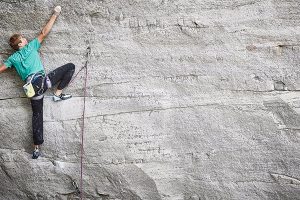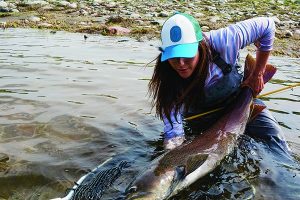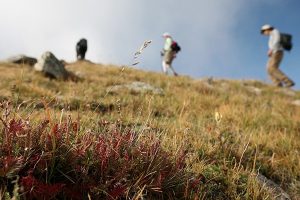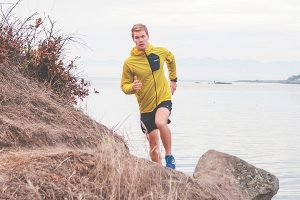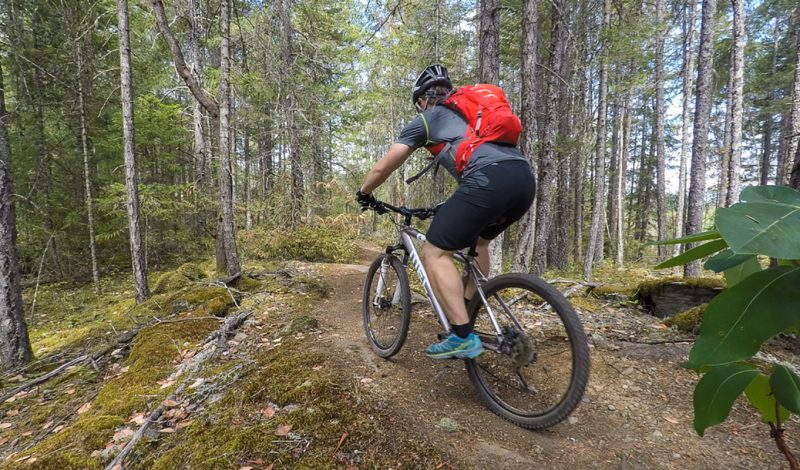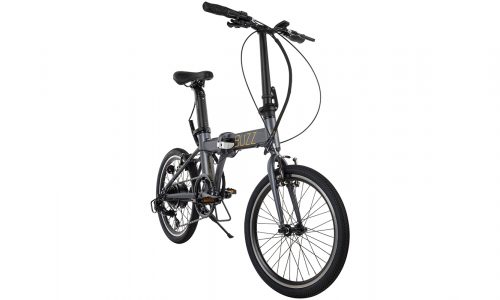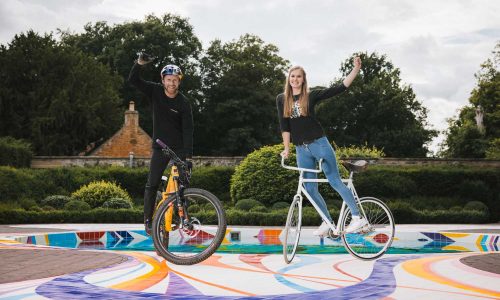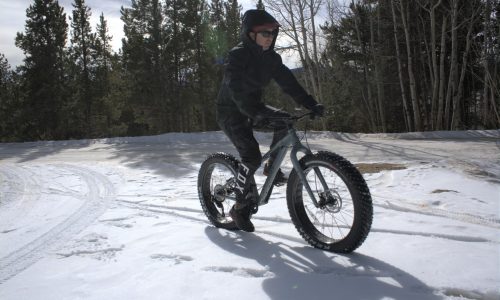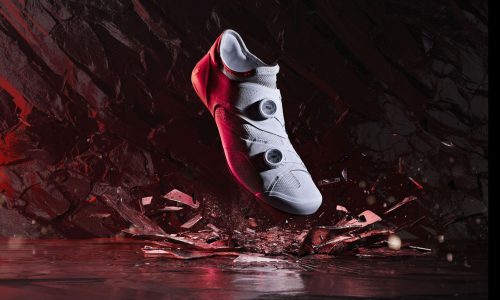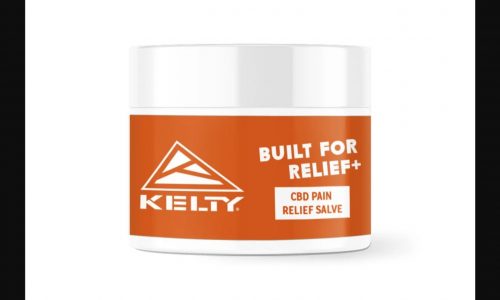It doesn’t matter if you’re out for an after-work sprint or an all-day epic, you’ll be carrying some essentials on your bike. Water, tools and an extra layer have to be stored somewhere. New options come out every day for carrying essentials right on your bike but there are still many reasons to carry a small pack. Carrying more gear, using it for other sports or just like backpacks are just a few benefits to getting a hydration pack for biking.
Our picks for this year differ by size, weight, pocket configuration and the style of water reservoir included. They range from small to large, simple to complex, and waterproof to not.
Best in Class
Osprey Raptor 14
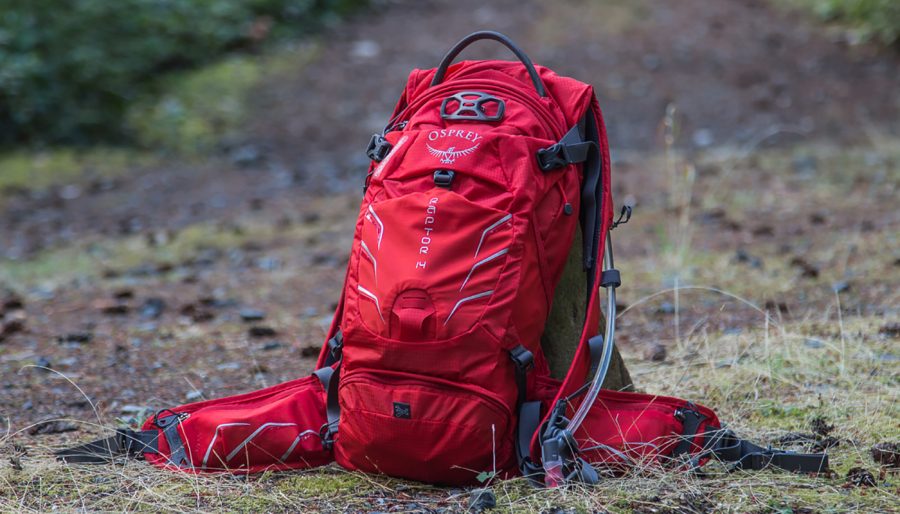 Weight: 1.61 lbs
Weight: 1.61 lbs
Capacity: 14 liters (10 L available)
Reservoir: Osprey Hydraulics 3L bladder built by Hydrapak with stiffener and slide-lock top, no baffle
Ventilation: Airscape backpanel – mesh-covered rigid foam
Storage: Dedicated bladder compartment, large main compartment with three small pockets, large phone/sunglasses pocket on front, external stretch pocket, small zippered pocket with three pockets outside stretch pocket, toolkit pocket on bottom, two hip belt pockets
What we like
- Zippered bladder opening
- Large hip belt pockets easily fit iPhone 7
- Detachable, rollout toolkit is fast and easy to use
- Lots of storage options
What we don’t
- Phone or sunglass pocket isn’t very soft.
- Minimal ventilation
- Hose doesn’t reach magnet with bigger chests or lower sternum straps
- Large for short rides.
For a larger biking hydration pack, the Osprey Raptor 14 really stands out. Many pockets easily hold everything you need to take on a long ride. The bladder pocket unzips completely at the top over the hose so there’s no need to thread the hose through small holes in the top of the pack. Hip belt pockets can easily hold large phones and bars.
The bottom pocket has a roll-out toolkit that’s easily detached from the pack. A small compression strap keeps it rolled up. The tool roll has 2 small zippered pockets, 1 large zippered pocket and 2 elastics for holding a short pump. There’s even a small piece of fabric for laying out parts.
It’s a large pack but compress down well. The back panel offers minimal ventilation but is very comfortable, similar to Osprey’s Talon series. The bite valve lock is somewhat difficult to operate with one hand but has decent flow. The Osprey Hydraulics reservoir has a stiff back do it which makes it even easier to insert into the bag. Since the hose has to reach across the chest for the magnet to work, testers with chests about 40 inches around had to position the sternum strap near the top so the hose would reach the magnet.
With it’s comfortable ride, easy bladder entry system and convenient roll-out toolkit, the Osprey Raptor 14 earned our Best Overall Pack award in the biking hydration category. MSRP: $140
Best Small Pack
Thule Vital 8
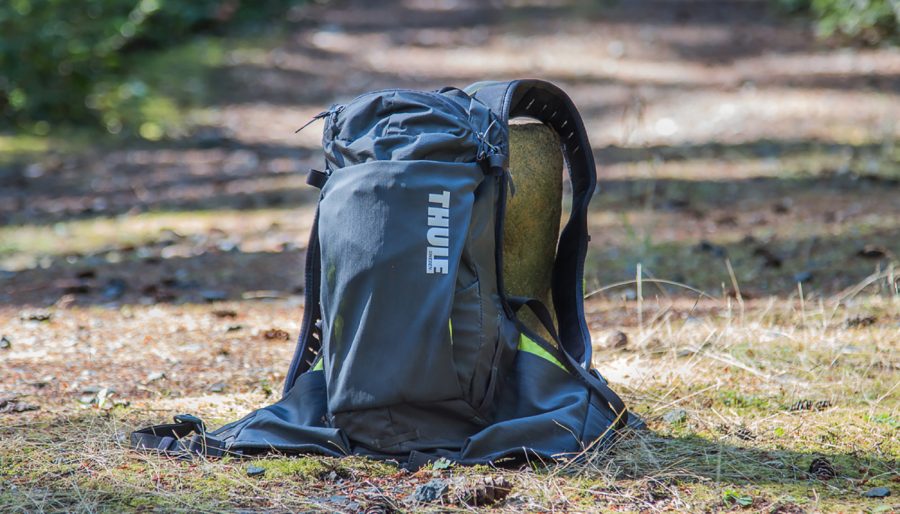 Weight: 1.2 lbs
Weight: 1.2 lbs
Capacity: 8 liters
Reservoir: 2.5 L Hydrapak reservoir with baffle
Ventilation: Perforated foam back panel
Storage: Large main pocket opening down one side for bladder, 2 pump slots, 2 small mesh pockets and 1 small zippered pocket. Medium soft zippered pocket for phones/sunglasses. Stretch pocket on front with small zippered pocket inside. Tall jersey-style stretch pockets on hip belt.
What we like:
- Retractable hose return system works very well
- Simple and comfortable
- Strap holders stitched in place on the hip belt.
What we don’t:
- Can’t put the hose on the left.
- Little ventilation
- No elastic on the chest strap
- Bite valve hard to unlock with one hand
Drinking from your hydration pack is something that’s frequently done, and it can be a pain to put the hose back on its magnet or clip. The Retrakt hose return system is the fastest way to put the hose back. Testers just let it fall out of their mouth and it swings back into place and connects. Because of the Retrakt system the hose can’t be put on the left shoulder. When refilling there isn’t a quick release on the bladder for the hose.
Testers found the Vital 8 to be very comfortable and easy to ride with. The ventilation was low on the back panel, but the jersey-style side pockets were well ventilated. The pockets stashed enough for short rides but were cramped for space on long rides or if testers carried armor. The 2.5-liter bladder was less than the other packs but included a baffle which prevented sloshing side to side.
The Retrakt system and comfortable ride as a small pack earned the Thule Vital 8 the Best Small Pack award in the biking hydration category. MSRP: $140
Best for Ventilation
Gregory Endo 10
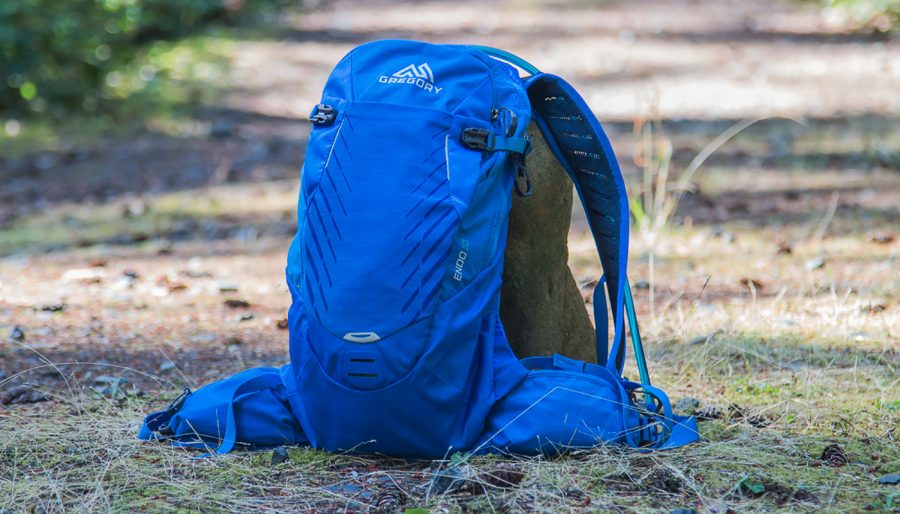 Weight: 1.94 lbs
Weight: 1.94 lbs
Capacity: 10 liters (including 3-liter bladder)
Reservoir: Gregory 3L 3D Hydro with SpeedClip mounting system and DryLock bite valve
Ventilation: Excellent, frame suspends off back
Storage: Main pocket for bladder, tools and some gear. Smaller front zip pocket for gear with 2 mesh pockets, a zippered pocket with padded soft lining.
What we like:
- Shift RS suspension can be moved to fit
- Well-ventilated
- Hip belt pockets and they fit an iPhone 7
- Included tool pouch
What we don’t:
- Frame is stiff
- 3D Hydro bladder awkward to fill
- No quick release on bladder hose
- Hard to get the hose in the clip on the right strap
The Gregory Endo 10 is a medium-sized hydration pack with a spring steel frame. The frame supports the Shift RS hip belt stabilization system and the EVAP moisture wicking back panel. The hip belt system is similar to larger packs that can move the hip belt up and down for better fit. The back panel is suspended away from the pack allowing for better airflow than all the other packs in this test. Because of the steel frame, testers found the back-panel stiff compared to the other packs.
Like the Osprey Raptor, testers with chest sizes above 40 inches had to position the sternum strap high on the rail for the magnet to reach across. The hose can also be routed down the left shoulder to help in this case. The QuickClip system on the bladder works well for this bladder but, since it’s a hard-plastic hook, won’t work for other bladders like the CamelBak Crux.
Testers like the included tool pouch. It zips open to show two zippered pockets and was enough to hold levers, patch kits, multi-tools and small pumps. Tubes were awkward to fit into the pouch, so testers often put them in the main compartment. MSRP: $120
Best for Wet Weather
Mission Workshop Hauser 14
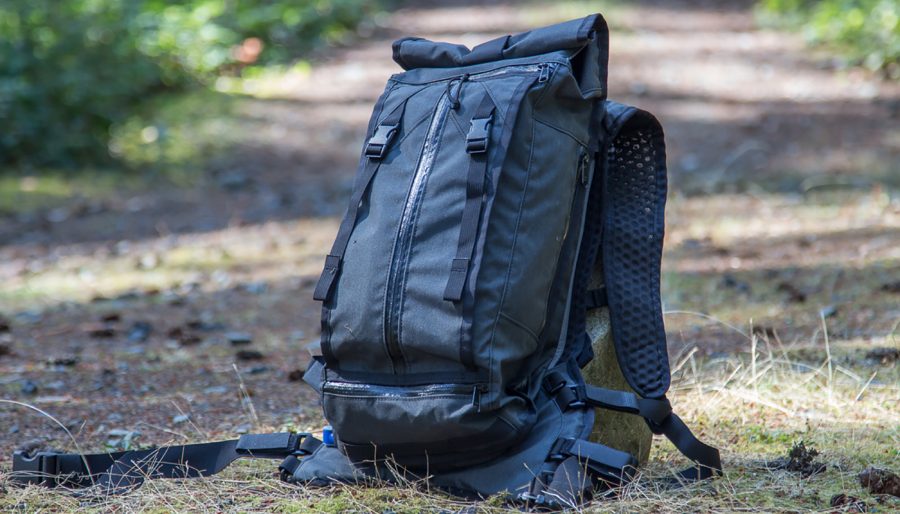 Weight: 2.5 lbs
Weight: 2.5 lbs
Capacity: 14 liters with 3-liter bladder (available in 10 liter)
Reservoir: add-on – 3L CamelBak Crux or 3L Hydrapak
Ventilation: Ariaprene hexagonal perforated foam with nylon mesh laminate
Storage: Wide panel opening for bladder, large roll-top main compartment, small zippered top pocket, small zippered side pocket, medium zippered pocket on front with tool roll, small zippered pocket on bottom for clips
What we like:
- Adjustable straps on the hips
- Very water resistant
- Elastic in the sternum strap
- Hose clips on both shoulders
What we don’t:
- Sternum strap pulls webbing off the shoulder straps
- Large surface area is warmer
- No buckles over bladder compartment as a backup for broken zipper
Larger and heavier than other packs in this test, the Mission Workshop Hauser is in a bit of a category of its own. Solid weatherproofing makes this our pick for the Best Pack for Wet Weather. The large main pocket has Velcro-latched roll-top but can also be folded over and clipped closed. Behind the main pocket, one waterproof zipper folds open the entire bag for easy access to the reservoir.
The perforated foam on the soft back panel allowed for a small amount of ventilation. The surface area of the back panel is larger and warmer than any of the other packs. It was most comfortable on cool days. The large tool-roll has four pockets, one large, one medium and two small. The one medium pocket easily held a patch kit, levers, multi-tool and spare tube. The pack is all made from Mission Workshop’s high tenacity 500 denier nylon in San Francisco.
A reservoir is not included by default with the Hauser though the 3-liter CamelBak Crux or 3-liter Hydrapak are available as accessories at purchase. We tested ours with a 3-liter CamelBak Crux which worked well. The Crux stores weight higher on testers back than the Hydrapak. Filling the Crux was easy with the large circular lid and the flow rate on the bite valve was very good. MSRP: $215
Best Crash Protection
Camelbak TORO 14
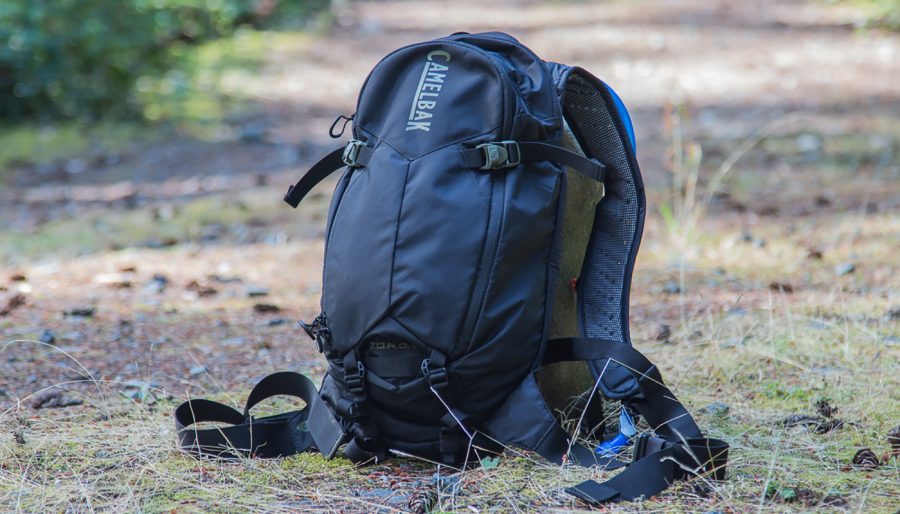 Weight: 1.8 lbs
Weight: 1.8 lbs
Capacity: 14 liters with 3-liter bladder (11 liters for gear)
Reservoir: 3 L CamelBak Crux with baffle and quick-release
Ventilation: Ridged foam with mesh on top for top and bottom, perforated foam in back protector with mono-filament mesh in small of back area.
Storage: Large bladder pocket, small zippered pocket with 2 small mesh pockets and key clip, large front pocket opens completely with 1 mesh pocket and 2 elastics for pumps or CO2 inside
What we like:
- Center back CE Level 2 protector for back panel
- Crux bladder easy to hold and fill. Easy to put into bag
- Compression straps on bottom for knee pads or other gear
- Easy one-handed bite-valve lock
What we don’t:
- Crux bladder lid can thread wrong and leak
- Crux reservoir carries weight higher
- Hard to put other bladders inside with no bladder hanger
The CamelBak TORO 14 is built for a specific rider in mind. With the CE Level 2 protector for the back panel it offers more protection in a crash than any of the other bags tested. Helmet clips on the front easily carry full-face helmets and compression straps at the bottom can hold extra gear like armor. Dual sternum straps kept the pack firmly in place. One sternum strap buckle has a whistle. The front pouch opens wide for easy access to one tool pocket with two elastics for pumps or CO2. The interior is a bright green which made finding things easier.
The 3-liter CamelBak Crux bladder was easy to fill with the large circular opening and rigid handle. One a couple occasions the lid threaded wrong and leaked. The handle on the Crux easily slid into the holder in the pack. There is no reservoir hanger for other types of bladders. The bite valve lock was easy to open and close one-handed and the flow rate was the highest of all the reservoirs tested. MSRP: $180
Best Value
Platypus Tokul 8
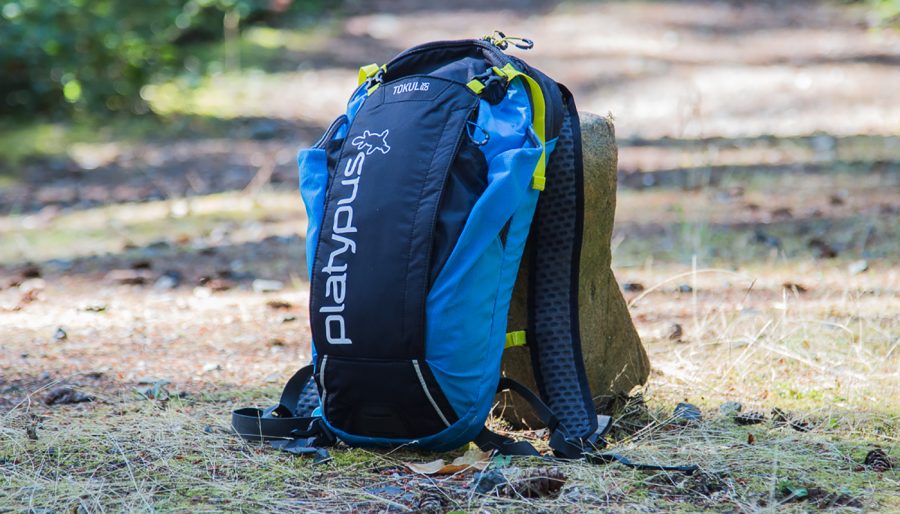 Weight: 1.2 lbs
Weight: 1.2 lbs
Capacity: 6 liters for gear, 3-liter bladder
Reservoir: Platypus Big Zip LP 3 L bladder with Slidelock closure, baffle and quick-release hose
Ventilation: RidgeAir back panel with deep ventilation channels
Storage: Bladder pocket with 2 bladder clips, 1 large main compartment with 3 mesh pockets and 1 zippered pocket, 1 stretch pocket on front with small zippered pocket on the outside.
What we like:
- Good ventilation
- Quick-release hose
- Magnetic hose clip
- Clips don’t run over the zippers
What we don’t:
- Back panel is a bit stiff
- 2 bladder clips won’t fit Camelbak or Hydrapak
- No elastic on sternum strap
- Hose magnet is always on the right
The Platypus Tokul came out in 2013 but is still going strong. Testers liked its small size and simplicity.
The RidgeAir back panel offered relatively good ventilation but was a bit stiff. The curved panel wasn’t as comfortable as other packs standing straight off the bike. Leaning over a bike, testers didn’t have an issue with the feel.
Clips on the Tokul don’t run over the zippers so you don’t have to unclip first to unzip. All the other packs in this test have buckles over the zippers, introducing another step when opening the bag.
The Platypus 3-liter Big Zip LP has a slide lock at the top which made for easy filling and cleaning. Two clips inside hold the bladder and were easy to use but don’t hold other brands of reservoirs well since most have a hook or hole in the center. The hose can route to either shoulder strap though the bite valve magnet is on always on the right. MSRP: $100
Best for Versatility
Patagonia Nine Trails 14
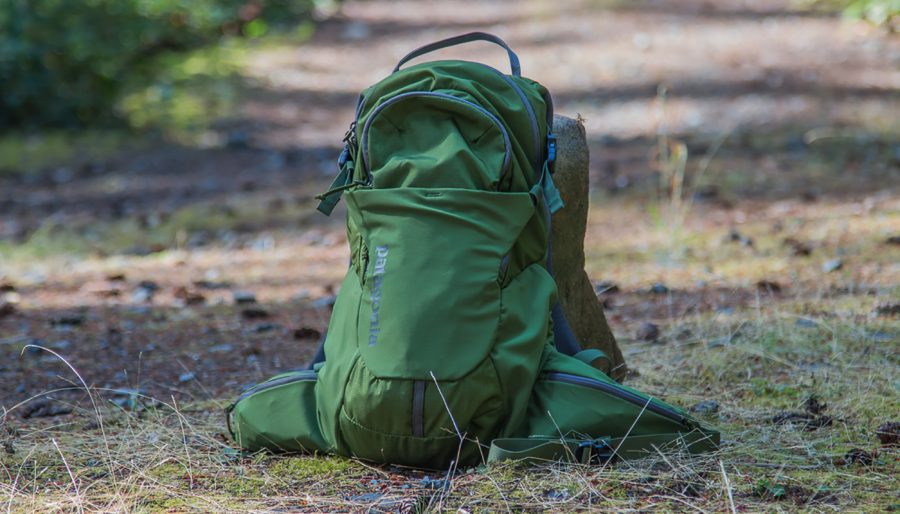 Weight: 1.3 lbs
Weight: 1.3 lbs
Capacity: 14 liters with 2-liter bladder
Reservoir: 2-liter Patagonia-branded Hydrapak with quick-release, no baffle
Ventilation: Perforated foam back panel with indented mono-mesh
Storage: Main compartment with bladder and storage space, front pocket with 1 pocket inside and 2 elastic straps for pump and 1 key clip, 1 stretch pocket on front, 2 stretch side pockets, and hip belt pockets.
What we like:
- Side stuff pockets as well as hip belt pockets
- Outside and liner treated with polyurethane coating and DWR
- Hip belt buckle on the left side so only one dangling webbing
- Sternum strap can switch sides.
What we don’t:
- Bladder clip is tough to open to get bladder out
- No dedicated pocket for bladder
- Bite valve lock hard to do with one hand
The Patagonia Nine Trails is a simple pack that can do a variety of sports. The flexible back panel is covered with perforated foam and a mono-filament mesh that doesn’t hold moisture. The main pocket holds the bladder and gear, while a slightly smaller front pocket holds tools and a bit more gear.
Hip belt pockets easily held phones and bars during testing. Side stretch pockets can also hold bar-sized items though testers didn’t feel confident to put much in them because of the minimal amount of stretch. The front stretch pocket was big enough to hold thin extra layers but did not stretch much either.
The sternum strap clips connect to the shoulder straps on a webbing daisy chain and can be reversed. Testers were happy they could remove the strap and put the side with the hose clip on either the right or the left. Removing the clips from the daisy chain was more difficult than just sliding the sternum strap up and down as on other packs.
The hip belt buckle is permanently on the left side instead of the middle like all the other packs. It took some getting used to, but the testers liked that there was only one piece of webbing to dangle and that was kept in place well by an elastic loop.
The reservoir is kept in place by a rigid plastic buckle which after a few tries was easy to use. Locking and unlocking the bite valve was difficult with only very small ridges on the valve to turn. MSRP: $139

